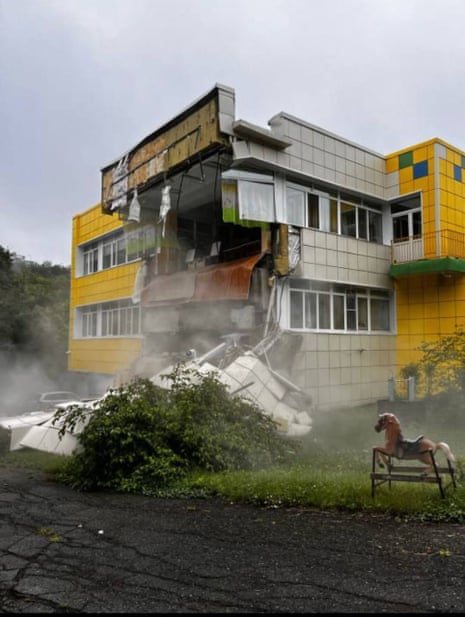Japan’s meteorological agency has issued a tsunami alert for its Pacific coast following a powerful magnitude-8.8 quake near Russia’s Kamchatka Peninsula.
The agency warned a tsunami of up to 3 metres could start arriving along the northern Japanese coasts in less than half an hour after the alert.
And the United States’s National Weather Service’s Pacific Tsunami Warning Center warned a tsunami could cause damage along the coastlines of all the Hawaiian islands.
“Urgent action should be taken to protect lives and property,” the warning stated.
The first waves were expected around 7pm, local time.
Japan’s meteorological agency said the quake happened at 8:25 am, local time, and registered a preliminary magnitude of 8.0.
The quake was about 250 kilometres away from Hokkaido, the northernmost of Japan’s four big islands, and was felt only slightly, according to Japan’s NHK television.
The US Geological Survey said it hit at a depth of 19.3 kilometres.
The USGC said shortly after that the quake’s strength was magnitude-8.7, then revised it up to 8.8.
Images captured before and after the earthquake show people leaving a beach in Shirahama, in western Japan, following an evacuation warning. (Kyodo via Reuters)
Russia’s Tass news agency reported from the biggest city nearby, Petropavlovsk-Kamchatsky, that many people ran out into the street without shoes or outdoor clothing.
Cabinets toppled inside homes, mirrors were broken, cars swayed in the street and balconies on buildings shook noticeably.
Tass also reported power outages and mobile phone service failures in the capital of the Kamchatka region.
The National Tsunami Warning Center, based in Alaska, issued a tsunami warning for parts of the Alaska Aleutian Islands, and a watch for portions of the West Coast, including California, Oregon, Washington, and Hawaii.
The advisory also includes a vast swath of Alaska’s coastline, including parts of the panhandle.
The Japanese government said it set up a task force for information gathering and response in case of any emergency.

A University of Tokyo seismologist Shinichi Sakai told NHK that a distant earthquake could cause a tsunami that affected Japan if its epicentre was shallow.
Japan, part of the area known as the Pacific ring of fire, is one of the world’s most quake-prone countries.
Earlier in July, five powerful quakes — the largest with a magnitude of 7.4 — struck in the sea near Kamchatka.
The largest quake was at a depth of 20 kilometres and was 144 kilometres east of the city of Petropavlovsk-Kamchatsky, which has a population of 180,000.